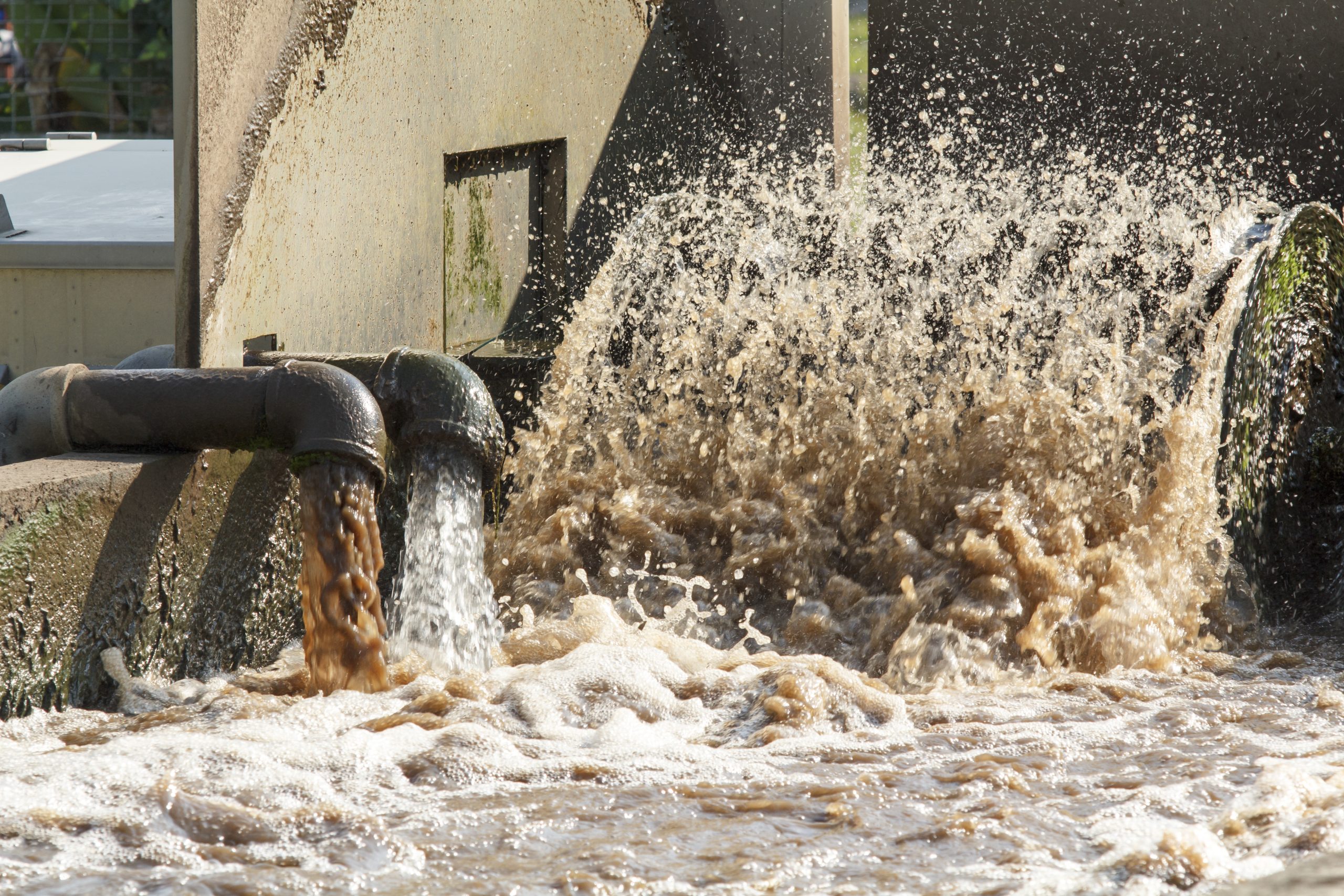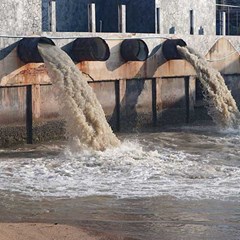Industrial Waste Water Treatment-- Advanced Solutions for Cleaner Effluents
Wiki Article
Key Techniques in Industrial Waste Water Therapy Processes
The treatment of commercial wastewater is a critical aspect of environmental administration, including an array of methods made to minimize the impact of contaminants. Improvements in modern technologies such as membrane layer filtration and advanced oxidation processes provide ingenious services for boosting therapy efficiency.Physical Therapy Approaches
Exactly how properly can physical therapy approaches resolve the intricacies of industrial wastewater? Physical treatment methods play a pivotal role in the preliminary stages of wastewater administration, focusing mostly on the elimination of solids and huge particulates. Techniques such as sedimentation, flotation protection, and purification are crucial for decreasing the concentration of suspended solids, thus enhancing the performance of succeeding therapy processes.Sedimentation includes the gravitational settling of solids, allowing for the splitting up of much heavier materials from the wastewater. This method is particularly reliable in clearing up water before chemical or organic treatments. Purification, on the various other hand, makes use of different media to capture particle matter, ensuring that smaller impurities are eliminated. This technique can be customized to accommodate various kinds of industrial effluents, creating more clear effluent streams.
Additionally, flotation protection techniques, which make use of air bubbles to lift put on hold solids to the surface area for removal, work in treating wastewater with high concentrations of fats, oils, and greases. On the whole, physical treatment techniques work as an essential initial step in the detailed management of industrial wastewater, guaranteeing that the load on subsequent therapy stages is reduced and improving total therapy efficacy.
Chemical Therapy Strategies
While physical therapy methods lay the foundation for reliable wastewater monitoring, chemical treatment techniques are essential for dealing with the a lot more complex impurities typically found in commercial effluents. These approaches use various chemical representatives to precipitate, neutralize, or oxidize hazardous materials, guaranteeing an extra complete removal of pollutants.
One usual method is coagulation and flocculation, where chemical coagulants such as light weight aluminum sulfate or ferric chloride are included in promote the gathering of suspended bits. This procedure enhances solid-liquid splitting up, reducing turbidity and improving water quality. Furthermore, neutralization procedures are employed to change the pH of wastewater, making use of acids or bases to counteract acidic or alkaline streams, respectively.
Oxidation-reduction responses play a vital role in degrading natural contaminants and virus. Chemical oxidants like hydrogen, chlorine, or ozone peroxide are utilized to break down complicated natural substances, making them much less harmful or a lot more eco-friendly. Additionally, progressed oxidation processes (AOPs) combine several oxidation methods to improve toxin removal efficiency.
Biological Treatment Processes
The effectiveness of wastewater treatment is significantly enhanced by biological treatment processes, which harness the all-natural metabolic tasks of microorganisms to disintegrate natural matter and eliminate toxins. Industrial Waste Water Treatment. These procedures mainly include cardiovascular and anaerobic digestion, each customized for certain kinds of wastewaterCardiovascular treatment processes make use of oxygen to support microbial development, advertising the malfunction of organic contaminants right into carbon dioxide and water. Typical methods consist of turned on sludge systems, where oygenation storage tanks help with the blending of wastewater with microbes, and dripping filters, which encourage biofilm growth on media surface areas.
On the other hand, anaerobic treatment procedures happen in the absence of oxygen, making use of anaerobic microorganisms to disintegrate raw material, causing biogas production, a renewable power resource. Anaerobic digesters are typically employed in commercial settings for this objective, successfully decreasing the quantity of sludge while producing valuable biogas.
The choice of a biological therapy method relies on wastewater attributes, treatment objectives, and regulative standards. The combination of biological processes in wastewater treatment not just enhances toxin elimination efficiency yet likewise promotes sustainability by lessening chemical use and supporting source recovery.
Advanced Oxidation Processes

Typical AOP techniques include Fenton's ozonation, reagent, and photocatalysis. Fenton's reagent, a mix of hydrogen peroxide and ferrous iron, catalyzes the formation of hydroxyl radicals, making it efficient for treating wastewater containing phenolic substances and other recalcitrant materials. Ozonation makes use of ozone more helpful hints as a powerful oxidant, capable of breaking down a vast array of organic contaminants while at the same time decontaminating the effluent. Photocatalysis employs light-activated drivers, such as titanium dioxide, to enhance oxidation reactions and remove contaminants.
AOPs offer a number of benefits, consisting of reduced sludge production and the capability to deal with wastewater with high focus of natural pollutants. The application of AOPs needs mindful consideration of functional parameters and cost-effectiveness, making certain that these sophisticated techniques are appropriately incorporated right into existing wastewater therapy systems.
Membrane Filtration Technologies

Microfiltration works for getting rid of suspended germs and solids, while ultrafiltration targets smaller organic particles and viruses. Nanofiltration bridges the gap between ultrafiltration and reverse osmosis, properly eliminating divalent ions and natural compounds. Reverse osmosis offers the highest degree of filtration, made use of largely for desalination and removing mono-valent ions.
Membrane technologies supply countless benefits, consisting of reduced power usage contrasted to typical therapy approaches, modular layout for scalability, and the potential for water recuperation and reuse. Nonetheless, obstacles such as membrane layer fouling and the demand for normal maintenance need to be resolved to make sure system effectiveness. In general, membrane filtering innovations represent an important component of contemporary industrial wastewater treatment approaches, advertising sustainability and resource preservation in water administration.
Final Thought
In conclusion, commercial wastewater therapy utilizes a varied range of techniques, consisting of physical, chemical, organic, and progressed approaches. Each strategy plays a crucial function in effectively attending to different contaminants, boosting water high quality, and promoting source sustainability. The integration of these strategies fosters a comprehensive treatment technique, making sure that industrial effluents satisfy regulative standards while minimizing environmental influence. Proceeded advancements in these methodologies will certainly further improve the performance and efficiency of wastewater therapy procedures in industrial settings.The therapy of commercial wastewater is an important aspect of environmental monitoring, involving a range of strategies created to mitigate the effect of contaminants.Just how successfully can physical treatment approaches attend to the complexities of commercial find out here now wastewater?Advanced oxidation procedures (AOPs) stand for an innovative approach in industrial wastewater treatment, created to efficiently weaken natural contaminants that are typically immune to traditional treatment techniques (Industrial Waste Water Treatment).In final thought, commercial wastewater treatment uses a varied selection of strategies, including physical, chemical, biological, and advanced techniques. Proceeded advancements in these methods will further boost the efficiency and performance of wastewater therapy procedures in commercial settings
Report this wiki page